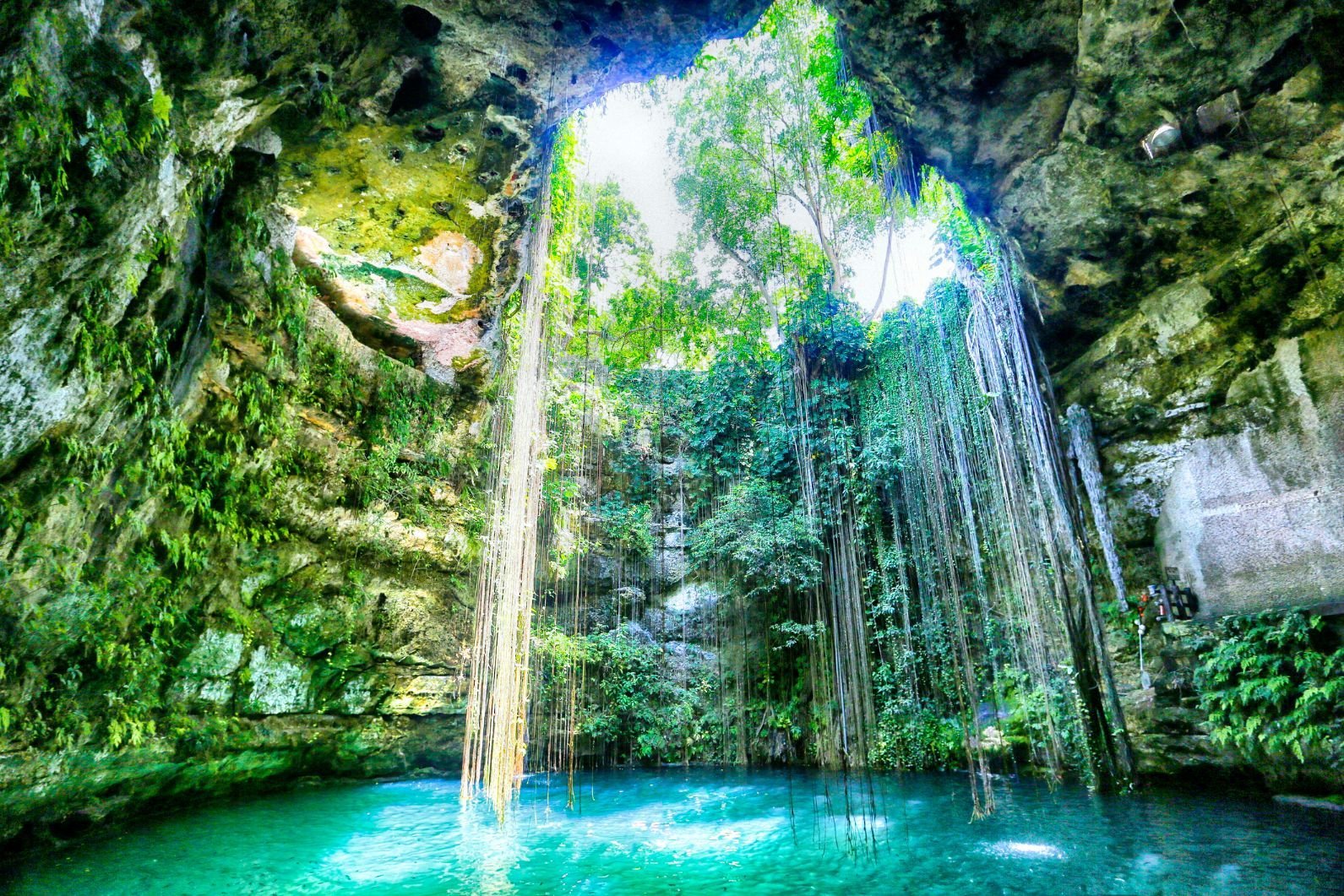The bedrock of Mexico's Yucatán Peninsula is pockmarked with natural sinkholes, which twist downwards into the porous limestone bedrock. These cenotes (a word from the Mayan ‘d'zonot’, meaning ‘sinkhole’) vary in size from tiny openings to vast water-filled caves. They are all connected, forming the world’s largest underground river network.
As well as being popular scuba diving sites and swimming holes, cenotes in the Yucatán have tremendous environmental and cultural significance. However, cenotes are also fragile ecosystems, and as the population of the Yucatán grows - thanks in large part to annual tourism footfall - vulnerable to pollution.
In this article, we explore the geographical and cultural importance of cenotes, while answering the question - is it possible to visit Mexico's cenotes responsibly?

How are Cenotes Formed?
Cenotes are formed by a process called speleogenesis. Put simply, the limestone bedrock is dissolved by acidified rainwater and seawater, until it collapses in upon itself, creating a system of caves and sinkholes, eventually recrystallising into new shapes - such as stalagmites and stalactites.
The majority of the world's cenotes - estimates fall between 6,000 to 10,000 - are located in Mexico, on the Yucatán Peninsula. This is because the Yucatan Peninsula was once underwater - its soil is composed of limestone, formed from marine fossils; the conditions needed for cenotes to form.
Furthermore, the Ring of Cenotes is an arc of sinkholes formed when a large meteorite struck the Yucatán Peninsula, 66 million years ago. This meteorite is known as the The Chicxulub Impactor. It was responsible for triggering the mass extinction of dinosaurs and 75% of earth’s plant and animal species.
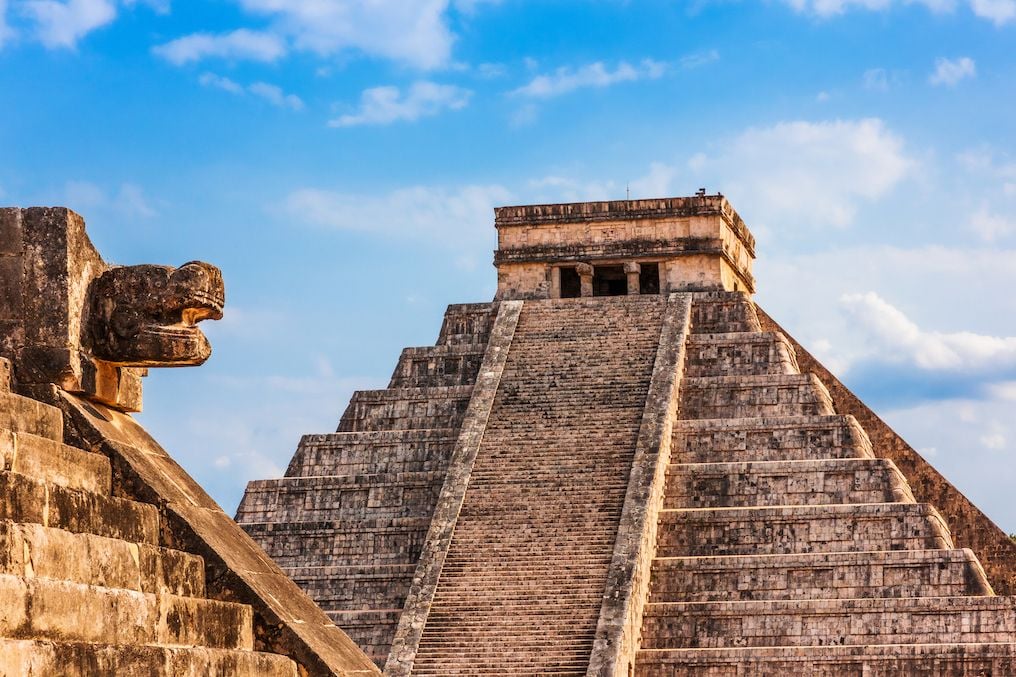
Why Were the Cenotes Important to the Maya?
For the ancient Mayans, cenotes were a vital fresh water source in an area surrounded by oceans. They had to be conserved to support communities through the dry season. Alongside water, they provided fish and valuable clay for pots.
Cenotes in the Riviera Maya also had symbolic significance. They were one of three entrances to the Mayan underworld (the other two were caves and the ballcourts for the game tlachtli). Because of this, offerings to the gods and ancestors were often thrown into the pools.
Rare gold figures and bells were discovered in its waters, alongside wood and ceramic objects that would otherwise have decomposed...
In the Late Classic period of the civilisation (AD 600-900) there was even a cenote cult at the ancient city of Chichén Itzá. It honoured water deities with prayers and rituals. Human sacrifices to the rain god Chaac were thrown into what is now known as Sacred Cenote.
“This may have been a response to degrading environmental conditions, where periods of drought were making farming more difficult and even impossible in certain locations,” explains Maya archaeologist Richard Kinkella.
This legend was confirmed by Edward Herbert Thompson, who bought the site in 1904 and dredged the cenote. He discovered skeletons in the subterranean depths.
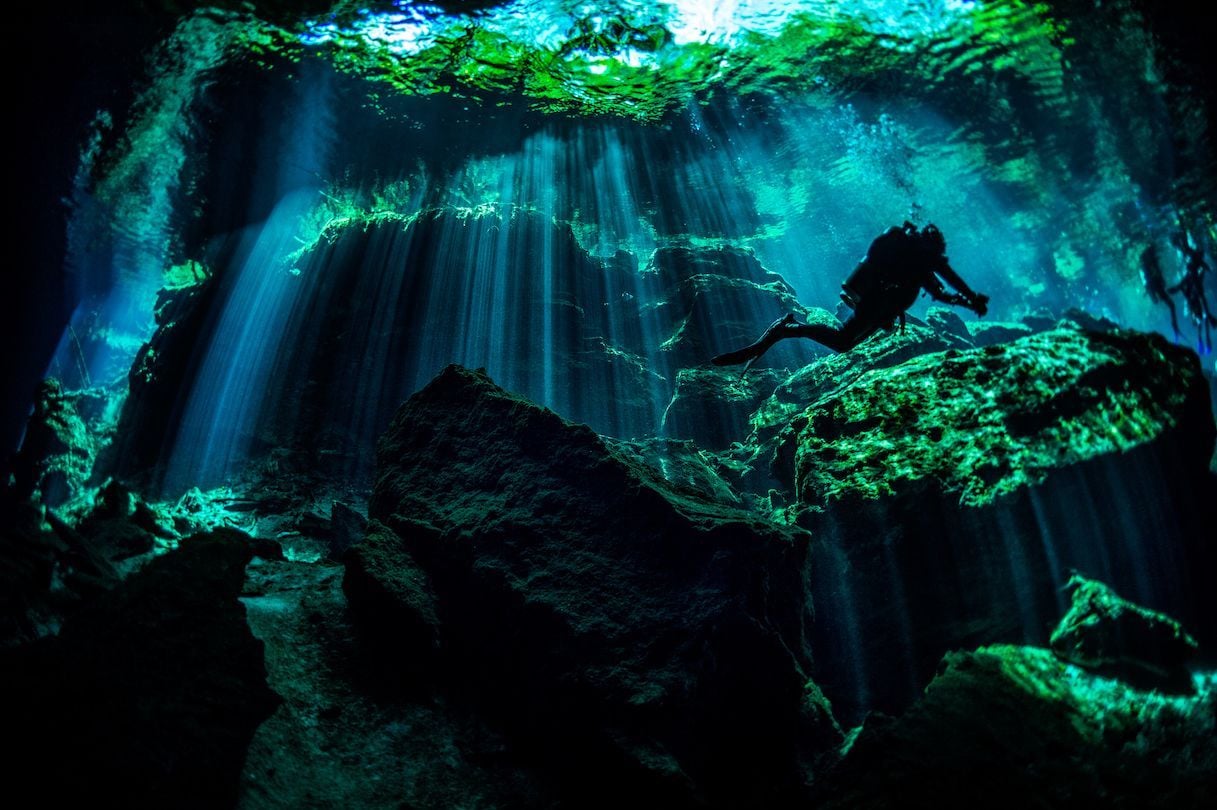
Human remains have also been discovered at Sac Actun - known as ‘haunted cenote’ - by archaeologist Bradley Russell and his team. However, the bones are unmarked, suggesting sacrifice was not the cause of death. Bradley believes they might have been plague victims, as the cenote lies outside the walls of an ancient Mayan city.
But it’s not all macabre. A later archaeological project at Sacred Cenote uncovered hundreds of carved jade plaques and beads. Even rare gold figures and bells were discovered in its waters, alongside wood and ceramic objects that would otherwise have decomposed.
In November 2021, archaeologists discovered an intact wooden canoe in a cenote near Chichén Itzá - the most well-preserved Mayan boat ever found. It is believed to have been used to collect water or deposit offerings in the centre of the cenote. Preliminary research dates it from 830 to 950 C.E, meaning it’s around a thousand years old!

But there are finds which date back even further than this. Between 2017-2018, divers recovered burnt charcoal samples from the Ancestors Chamber of the Aktun Ha cenote.
Sample analysis revealed that the wood had been burnt between 10,250 and 10,750 years ago - the last remains of ancient fires. The divers also discovered stone tools (such as hammers and scrapers) in the cenote. This suggests that before the cave flooded, it was used as a shelter for cooking and butchery by prehistoric peoples.
The blue waters of the cenotes contain numerous untold stories. As exploration of them continues, archaeologists will continue to uncover vital clues about the region’s history and culture.
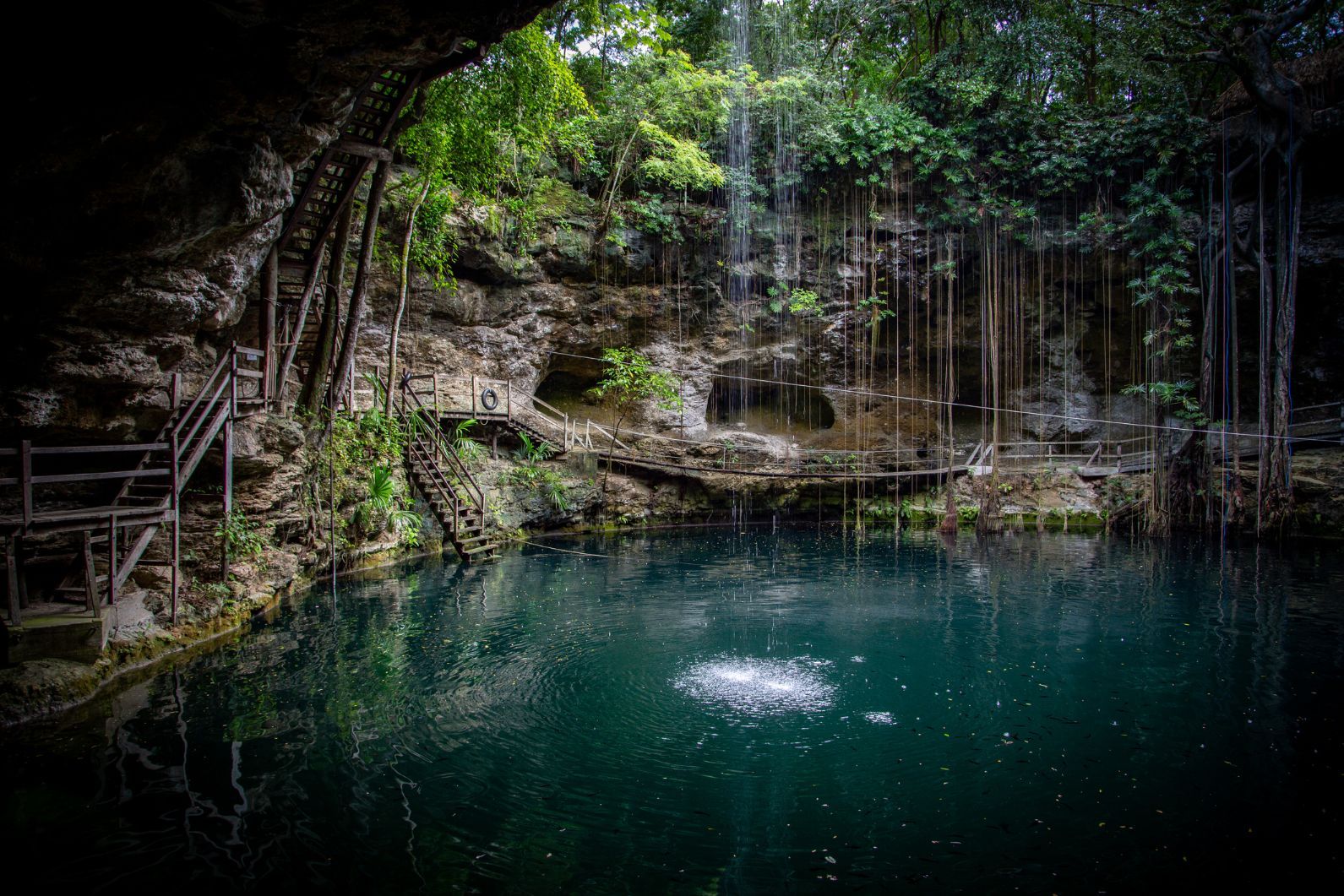
Pollution Problems in Mexico's Cenotes
Conserving the cenotes in the Yucatán is undeniably important. They are culturally and historically significant, and as such they are also popular with tourists too. Understandably so. This comes with positives and negatives.
Tourism might provide the region with valuable revenue, but it also causes problems. Intensive development on the peninsula means that mangroves are destroyed to make way for resorts. Without this natural filtration system, more contaminants leach into the waterways.

Cenote Azul is one example of a popular and well-maintained swimming spot, easily accessible from Playa del Carmen. Cenote dos Ojos consists of two cenotes connected by a 400m long cave passageway, and is very popular with divers.
While popular tourist cenotes are well managed, there are no environmental regulations in place for the other cenotes. They are still used by today’s Maya communities, who still use the water for agricultural purposes. Many no longer drink the water directly, due to its declining quality.
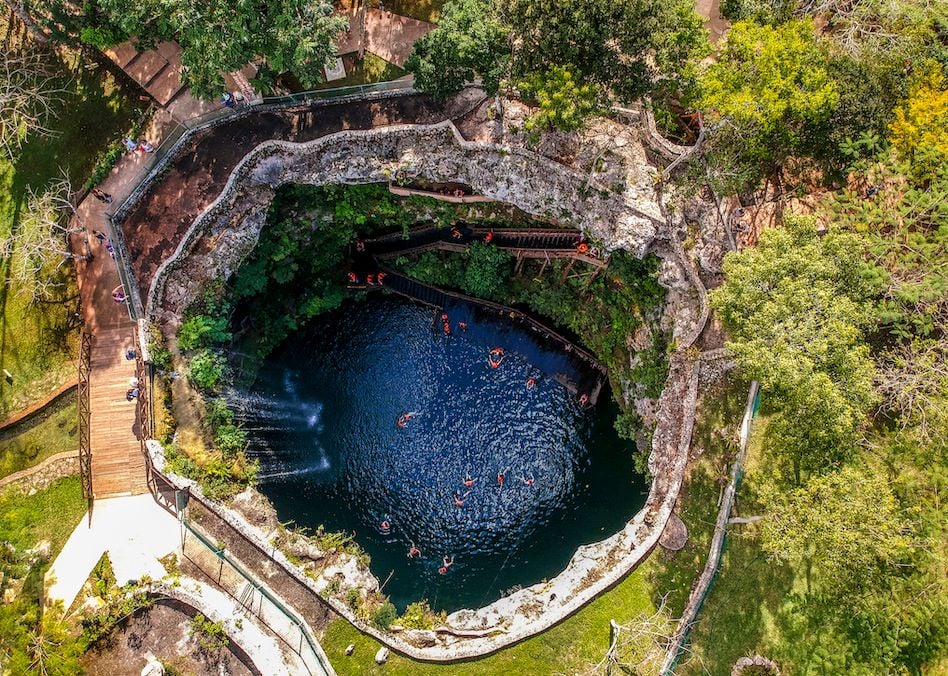
In 2011 a water pollution analysis of the cenotes was conducted by UNU-INWEH’s Caribbean Coastal Pollution Project. It discovered pollutants ranging from cocaine to caffeine, traces of deodorant and nicotine.
The study also suggested that with a tenfold population increase expected by 2030, problems were expected to worsen unless something was done.
Keeping the Cenotes Clean
So, has something been done? The local government is aware of the problem and has embarked on a cenote cleaning and ecological restoration programme. In 2021 it removed close to five tonnes of waste from the cenotes (predominantly single use plastics).
There are also private cenote cleaning operations, run by environmental NGOs, local communities and sustainable tourism initiatives such as Grosjean Expeditions. However, cleaning the cenotes is a difficult task.
“Sanitation continues to be carried out in the same cenotes two or three times. We continue to remove waste, not new, which is also good, but old waste that is still sedimented is appearing,” explains Sayda Rodríguez Gómez, head of the Secretariat of Sustainable Development (SDS).
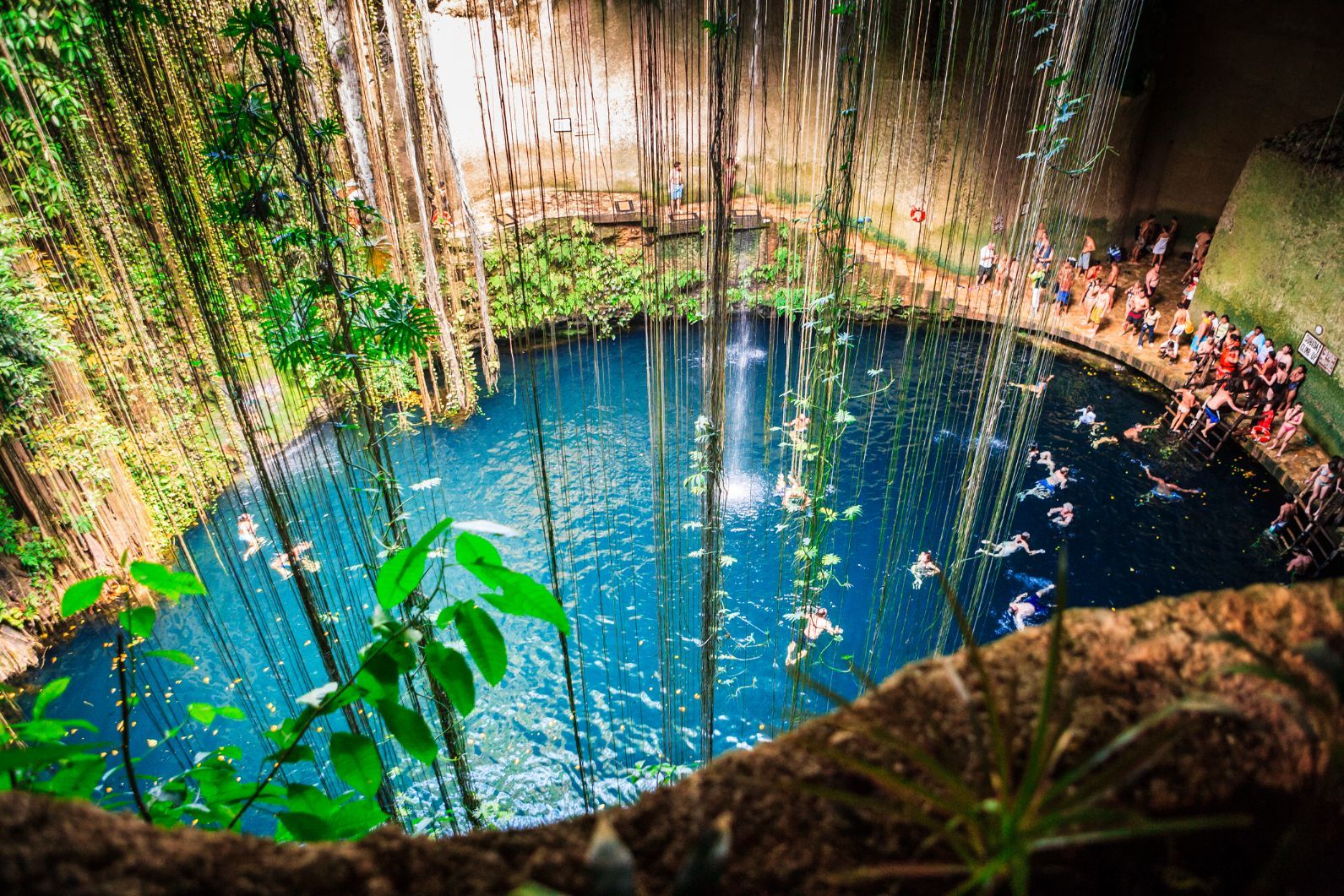
Rather than simply removing waste, then, it is vital to educate locals and tourists about the importance of conserving the cenotes. Yolanda López-Maldonado is a Mayan ecologist who believes that for the cenotes to be conserved, contemporary science must be considered alongside indigenous knowledge.

In an essay published on Medium, she argues that ancient Mayan communities once had an effective system of cenote conservation, and considered themselves guardians of these sacred sites.
“Through disempowerment and dispossession brought about by colonisation, however, it has become difficult for Indigenous peoples to relate to their environment,” she writes. Her work involves revitalising ancient Mayan knowledge about the cenotes, helping Mayan communities become more emotionally involved with their local environment.
“By bridging natural and social sciences with the knowledge held by the Indigenous people and by developing actions with different groups, through carefully planned local projects, and cooperation, I believe that it is possible to protect cenotes and to work together for a better ecosystem,” she explains.
The Best Cenotes in Mexico to Visit Responsibly
1. The Cenotes of Tankah
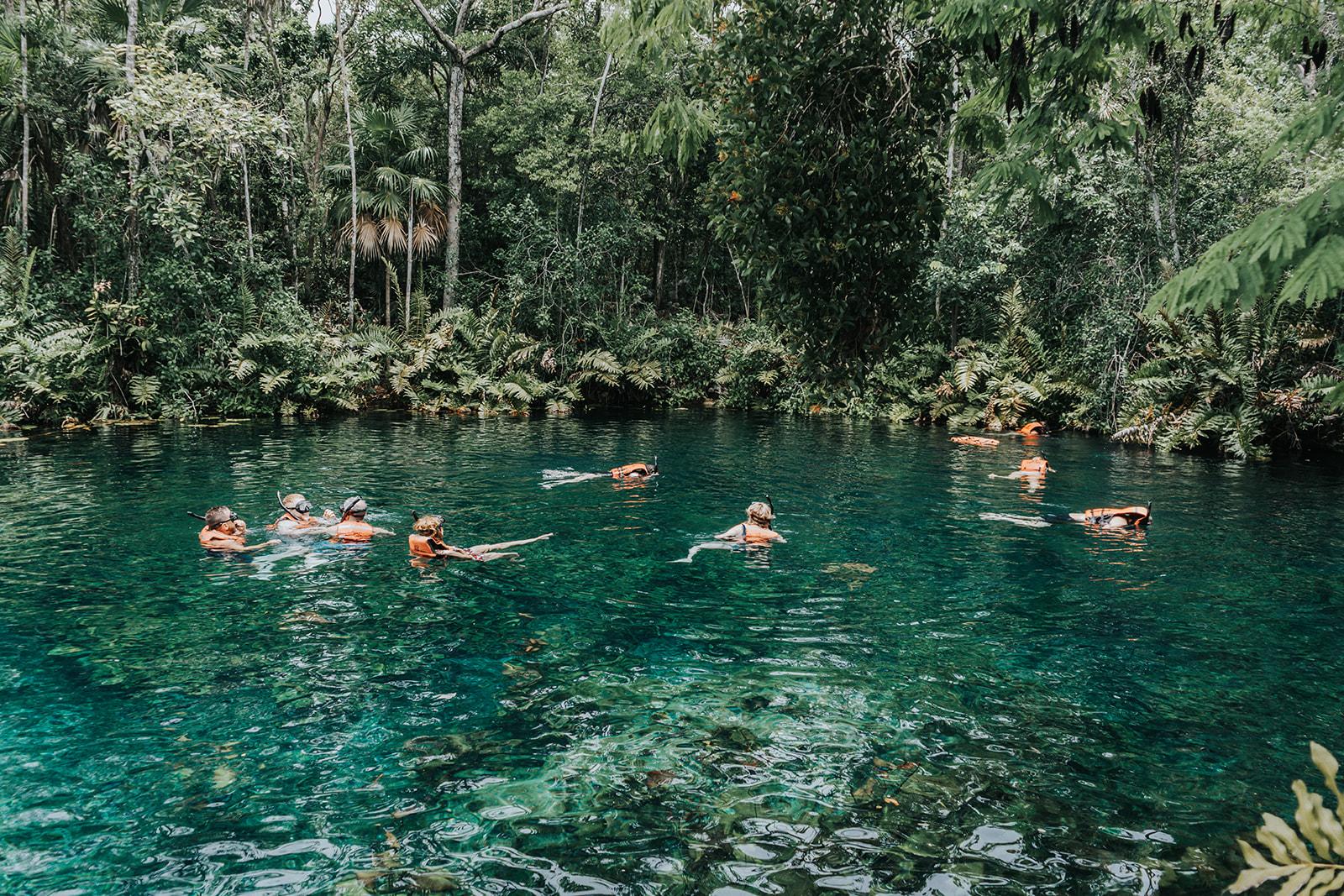
The Tankah Cenotes are located near Tulum, within a private nature reserve run sustainably by the local Mayan community. There are three cenotes within the park - cenote azul, cenote pirañas and cenote naval - surrounded by dense jungle and lagoons. You can easily spend an afternoon here as there are so many activities on offer, including snorkelling, zip lining, canoeing and simply enjoying a relaxing swim.
2. Cenote Esmeralda
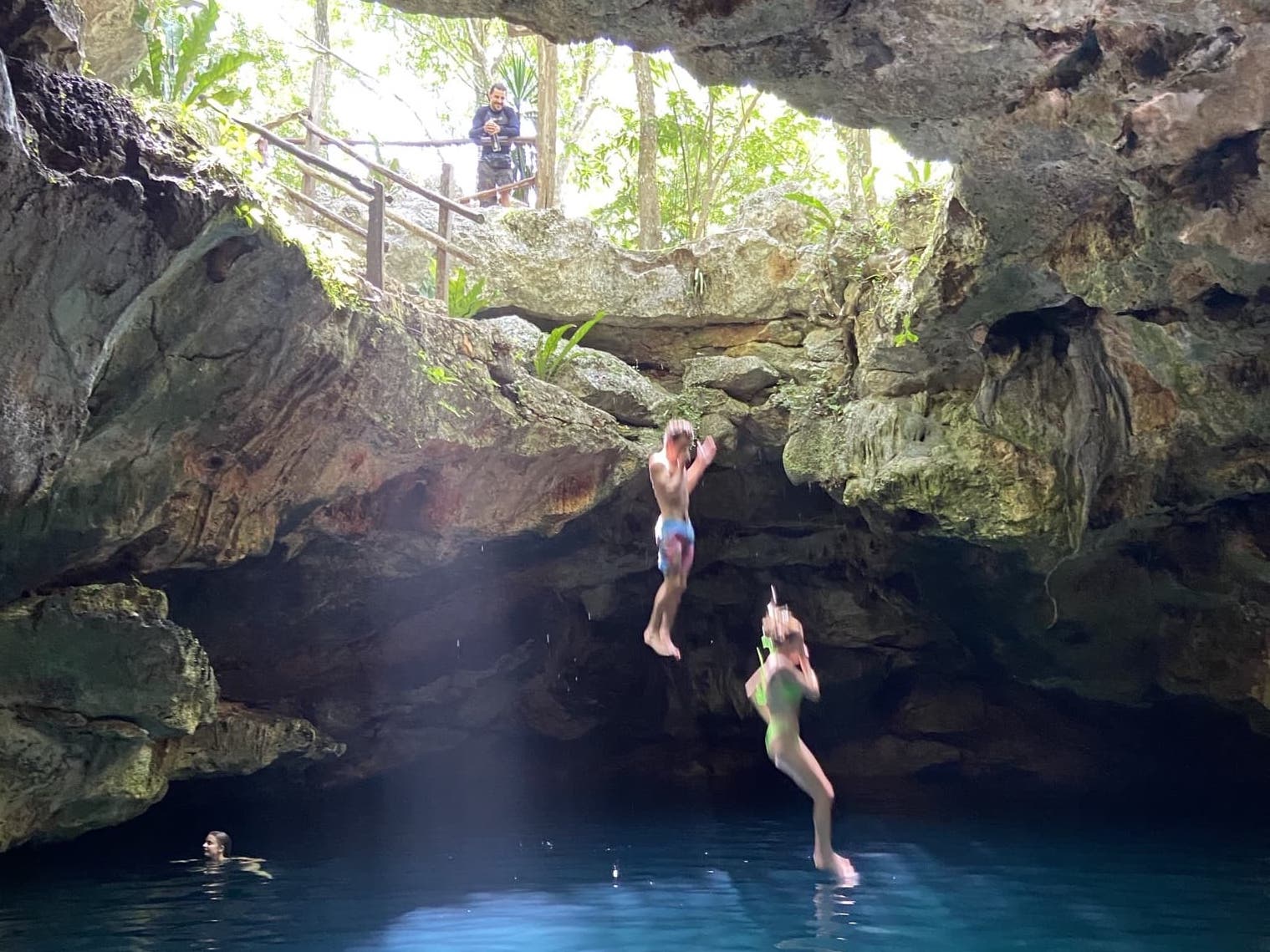
A small cenote located within the small community of Nuevo Durango, just down the road from Punta Laguna, a nature reserve with impressive lakes and a semi-deciduous jungle boasting extraordinary biodiversity. This tucked-away cenote is run by a local family and rarely sees crowd - you might, in fact, be the only people there.
3. Cenote Xux Ha
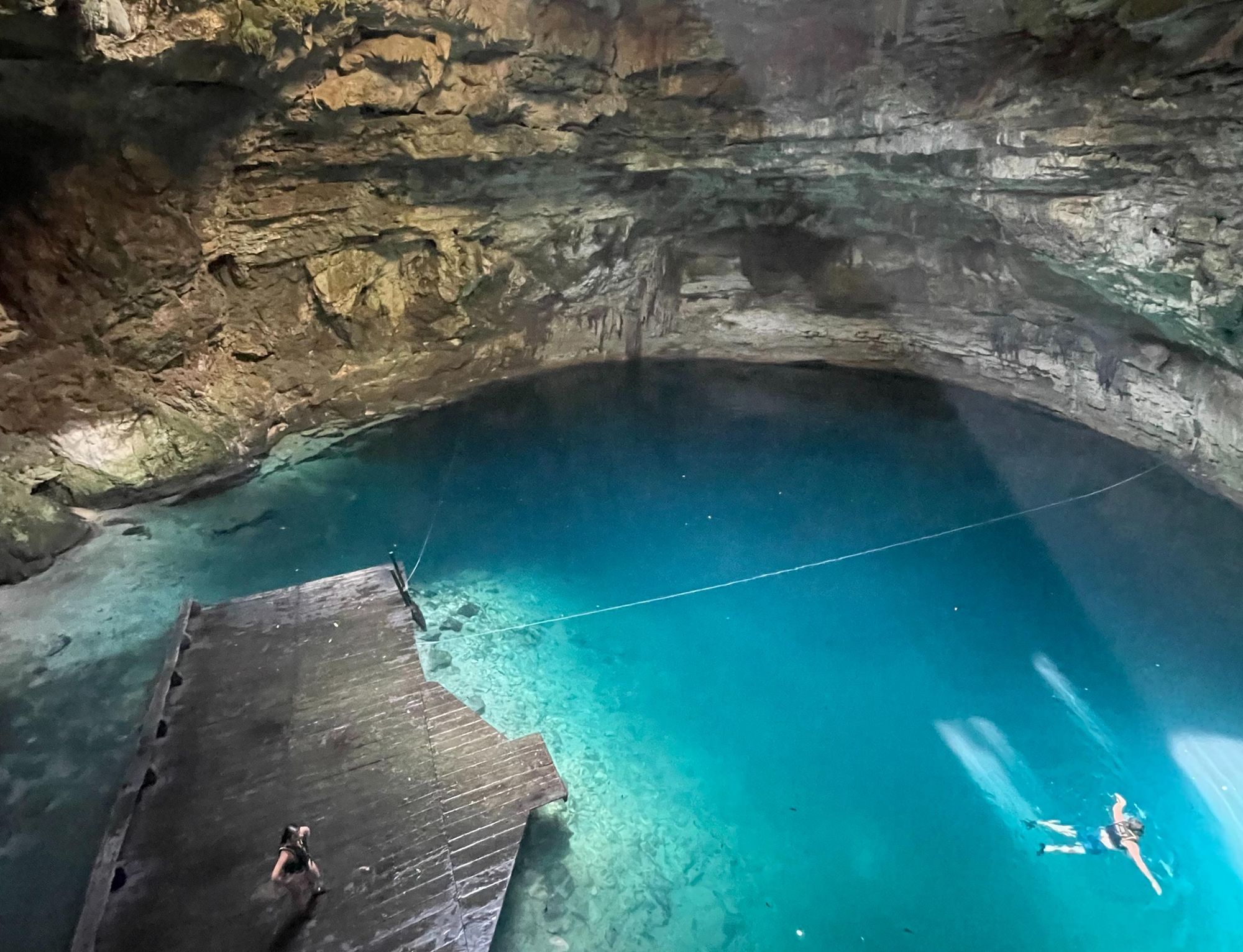
Cenote Xux Ha is a cave cenote near Valladolid run by a local family - despite its beauty, it's still off the tourist radar. You'll descend into an underground chamber via a flight of stairs, for a refreshing swim in the cool, turquoise water, with the limestone roof arching over you. There's a rope swing and a diving platform. Outside, you'll find changing rooms, a small picnic area and a refreshment stands.
Inspired? Check out our Ultimate Adventure in Mexico's Yucatan Peninsula now - it includes visits to the community-run cenotes.


